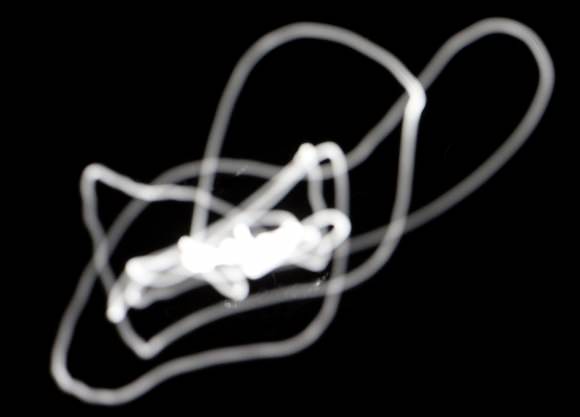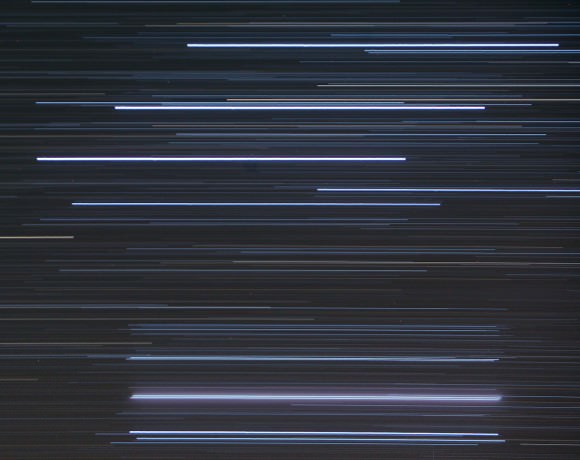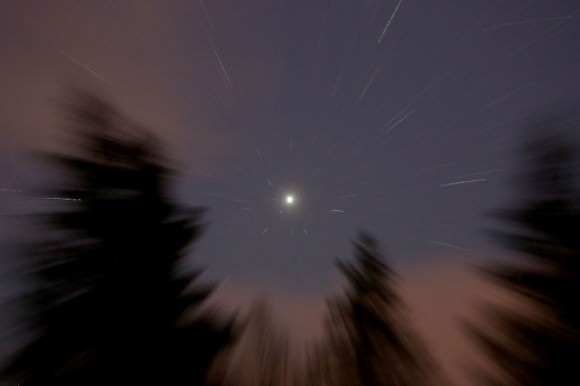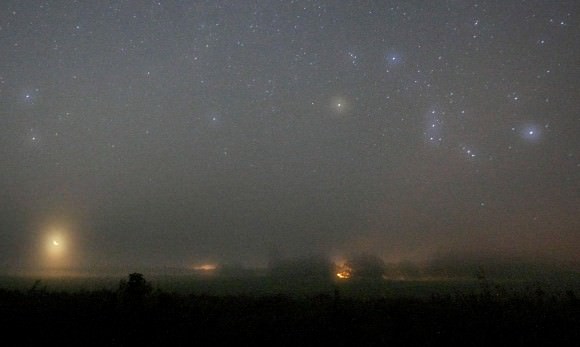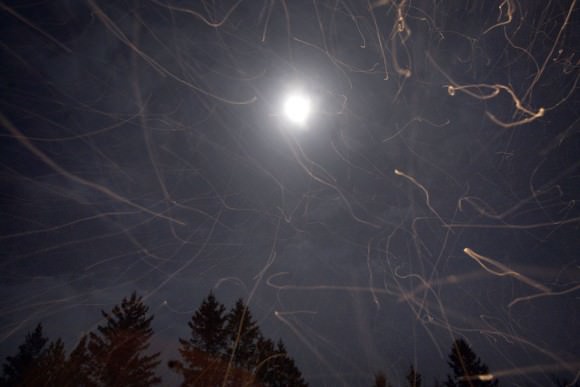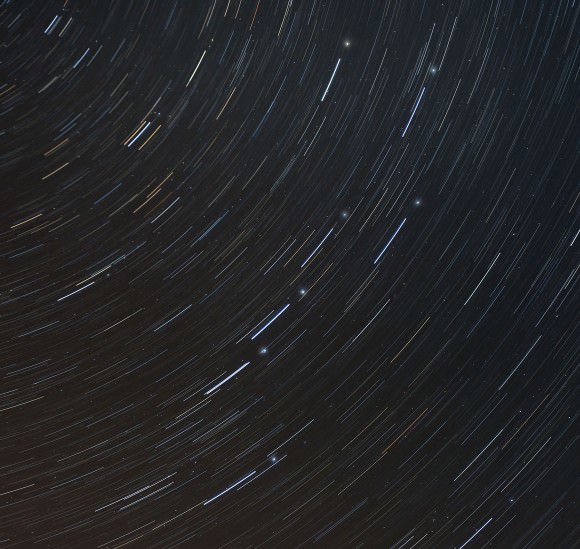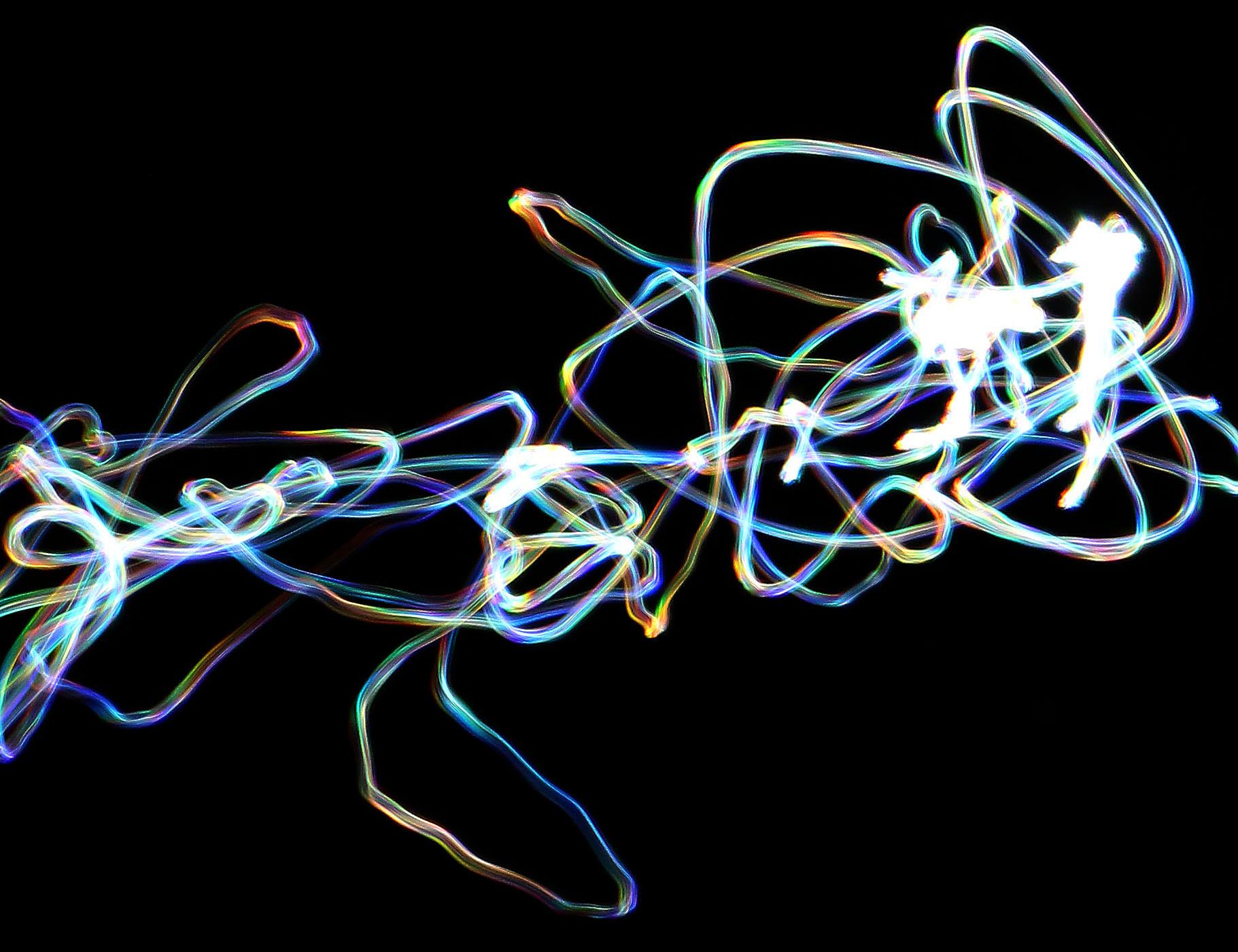We all have cameras, and the sky’s an easy target, so why not have a little fun? Ever since I got my first camera at age 12 I wanted to shoot time exposures of the night sky. That and a tripod are all you need. Presented here for your enjoyment are a few oddball and yet oddly informative images of stars and planets. Take the word “art” loosely!
